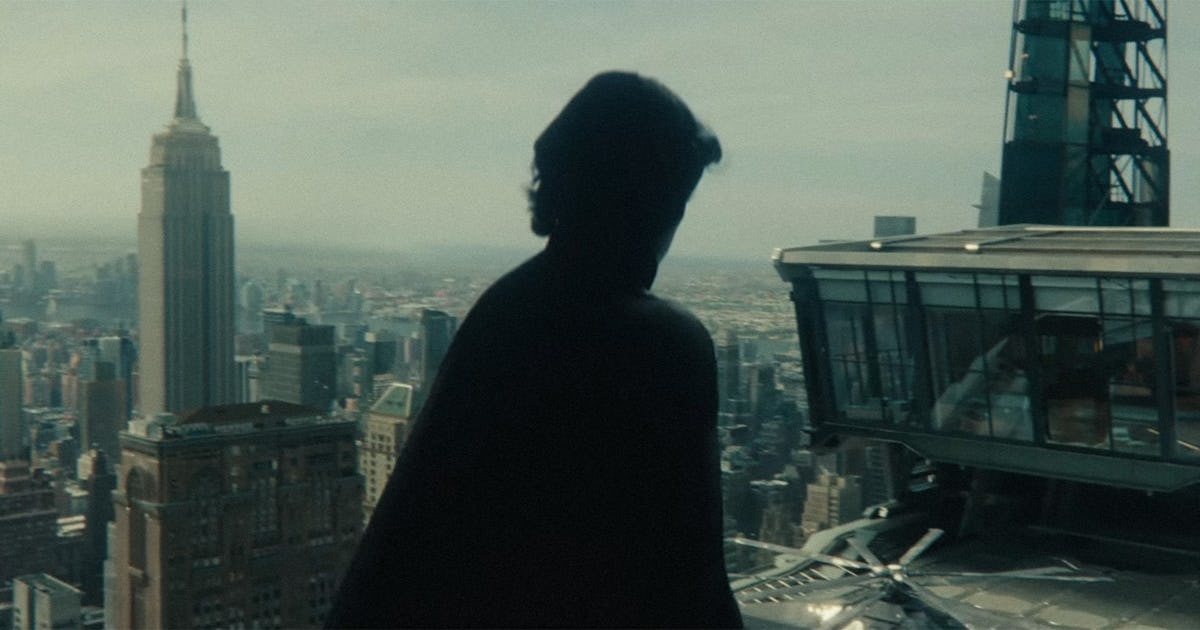Marvel Studios has always been tight-lipped about upcoming projects, but the secrecy surrounding Thunderbolts* has been more complex than most. Much of that had to do with the film’s antagonist: with Marvel’s most notorious anti-heroes taking center stage, they’d have to unite against a suitably dangerous threat. Who would be big (and bad) enough to stand against such a team? Part of the answer to that mystery lies with Valentina Allegra de Fontaine (Julia Louis-Dreyfus), the current director of the CIA, and the anti-Nick Fury (Samuel L. Jackson) in a lot of ways. The threat she poses to Marvel’s Cinematic Universe has been subtle until now, but Thunderbolts eagerly embraces Valentina’s capacity for evil, using her to introduce an all-new, all-powerful villain.
Valentina may be the one pulling the strings in Thunderbolts, but the eponymous group is mostly facing off against Sentry (Lewis Pullman) and his alter ego, The Void. His introduction to the MCU was one of Thunderbolts’ worst-kept secrets, but Marvel had good reason to keep the character under wraps. Sentry is one of the more complex characters in Marvel comics, with a convoluted origin to boot — his powers basically make him Superman, but he’s hindered by a host of mental disorders and addiction issues. Many wondered how Marvel would adapt his powers and his weaknesses on the big screen: the comics haven’t always done this character justice, nor has the MCU had the best track record with similar themes.
Now that Thunderbolts is out in the world, it’s worth noting that it takes a few liberties with Sentry. But these changes mostly work in the film’s favor. It might have given us Marvel’s best look at mental illness yet.
Spoilers ahead for Thunderbolts*.
Who is Sentry?
Sentry’s new powers are basically a metaphor for depression — but it mostly works for the MCU.
Marvel Studios
First introduced in the 2000 Marvel Knights miniseries, Sentry’s origins is a bit of a quirky one — writers Paul Jenkins and Rick Veitch conceived of an all-powerful superhero who had been part of Marvel Comics history the entire time, only he and everyone else had forgotten him. But his backstory is a little more straightforward: In the comics, Robert Reynolds — a high school student suffering from schizophrenia and anxiety disorder — becomes Sentry after exposure to a powerful Super Soldier serum. He gains the strength of “a million suns,” but he soon manifests an alternate, malevolent persona called the Void. Initially, Robert has no idea that the Sentry and the Void are one and the same, as the latter can manifest his own corporeal form.
As Sentry grows more powerful, learning to control his abilities and even joining the Avengers, he becomes a legendary hero. The only limit to his powers lies within: the more vulnerable his mental and emotional state, the weaker he becomes. Time and again, he fights to keep the Void suppressed, as this persona is dedicated to spreading terror, obliterating life, and slaughtering as many people as Sentry can save.
How Does Thunderbolts* Change Sentry?
The Thunderbolts prove to be a compelling match for Sentry.
Marvel Studios
Thunderbolts remixes the character in a few crucial ways. Here, Robert (or “Bob”) is a volunteer in the Sentry Program, an experiment spearheaded by Valentina and her private company, O.X.E. Corp. He’s the only one who survived a gauntlet of dangerous medical trials — but as Valentina is currently under close political scrutiny, she has no idea that her riskiest experiment has actually paid off. It’s not until she sends her most successful operatives — Yelena Belova (Florence Pugh), “U.S. Agent” John Walker (Wyatt Russell), Ava Starr/Ghost (Hannah John-Kamen), and Taskmaster (Olga Kurylenko) — to the vault where Bob is being held that anyone realizes he survived. From there, he becomes a tool to distract the world from Valentina’s exploits and destroy the biggest threat to her power: the newly formed “Thunderbolts.”
Bob is only beginning to understand his powers when Valentina debuts him as a new hero, and his emotional baggage — “depression,” a meth addiction, “delusions of grandeur,” and a litany of childhood traumas — makes him a dangerous and unstable addition to her arsenal. The first time he fights the Thunderbolts, it’s with garden-variety super-strength, speed, and flight. He also gains a new, unique ability in the film: whenever he touches someone, they’re forced to relive their worst memory. This is amplified exponentially when he later goes rogue and becomes the MCU’s version of the Void, a pitch-black figure with glowing silver eyes. He covers New York City in a cloud of black, sending anyone in its path into a shadow realm that plays their worst experiences on loop.
Through Bob, the MCU comes closer than ever to a truly nuanced depiction of mental illness. It helps that Thunderbolts is determined to end things on a more optimistic note, defying superhero satires like The Boys. Bob is much more than a “realistic” commentary on the Superman complex or the fascist implications of an all-powerful hero: he and his personas reflect the struggles that real people face, but that struggle isn’t without hope. Sure, Thunderbolts goes a little broad in its exploration of depression — and when the Thunderbolts bring Sentry back from the brink with the power of friendship, it does lean a little too earnest. But the film deserves its flowers for adapting such a divisive character in live-action, and sticking the landing without any sardonic cynicism.
Thunderbolts is now playing in theaters.
Subscribe for free to Inverse’s award-winning daily newsletter!
‘Thunderbolts’ makes some big changes to Sentry, but it gives Marvel its best depiction of mental illness in the process. Read More

